In a time of the social media buzz, when freshly brewed content is trending every new day, just pumping out content no more drives results. To stand out, you need to create something truly special.
A carefully planned content strategy is the key to unlocking your brand’s true potential on social media.
No matter what your goals are, be it traffic generation, increasing awareness, generating leads, or the master of all, conversions, it is a powerful strategy that makes each of these goals possible.
The problem?
Developing a successful content strategy is a significant amount of hard work, creativity, resources, and time. But fret not. You have help.
In this post, you’ll find out a complete seven-step guide for developing a powerful social media content strategy for your upcoming campaigns in 2021 and years to come.
7 Easy Steps To The Exceptional Social Media Content Strategy
The success of a social media content marketing campaign at the core is determined by how well the content is aligned to the context.
If your content is published to an audience that does not care about your content, it is bound to fail. This means for any content to succeed, you need to start with the premise.
Do your research and map your content creation landscape before diving into execution. This will give your content development venture an anchor.
So now when you know how to approach social media strategy development, let’s take a look at the exact steps that you can use for powering your content strategy.
1. Set SMART goals
To reach somewhere you need to first know where you want to go. This is exactly why goal setting is the first stage of any successful content strategy. But why S.M.A.R.T?
As they say, ‘if you cannot measure it, you cannot improve it.’
S.M.A.R.T goals make your content strategy specific, measurable, achievable, relevant, and time-bound. This gives you a sense of performance in your endeavor. But this is just the initial investment.
Following are few examples of S.M.A.R.T goals and their potential success metrics:
- Increasing your brand awareness
- Success metrics could be a count of your followers, the reach of your social media followers, how many people shared and engaged with your posts, etc.
- Driving traffic to your website
- Potential success metrics could be traffic you received from your social media posts, bounce rates, clicks, etc.
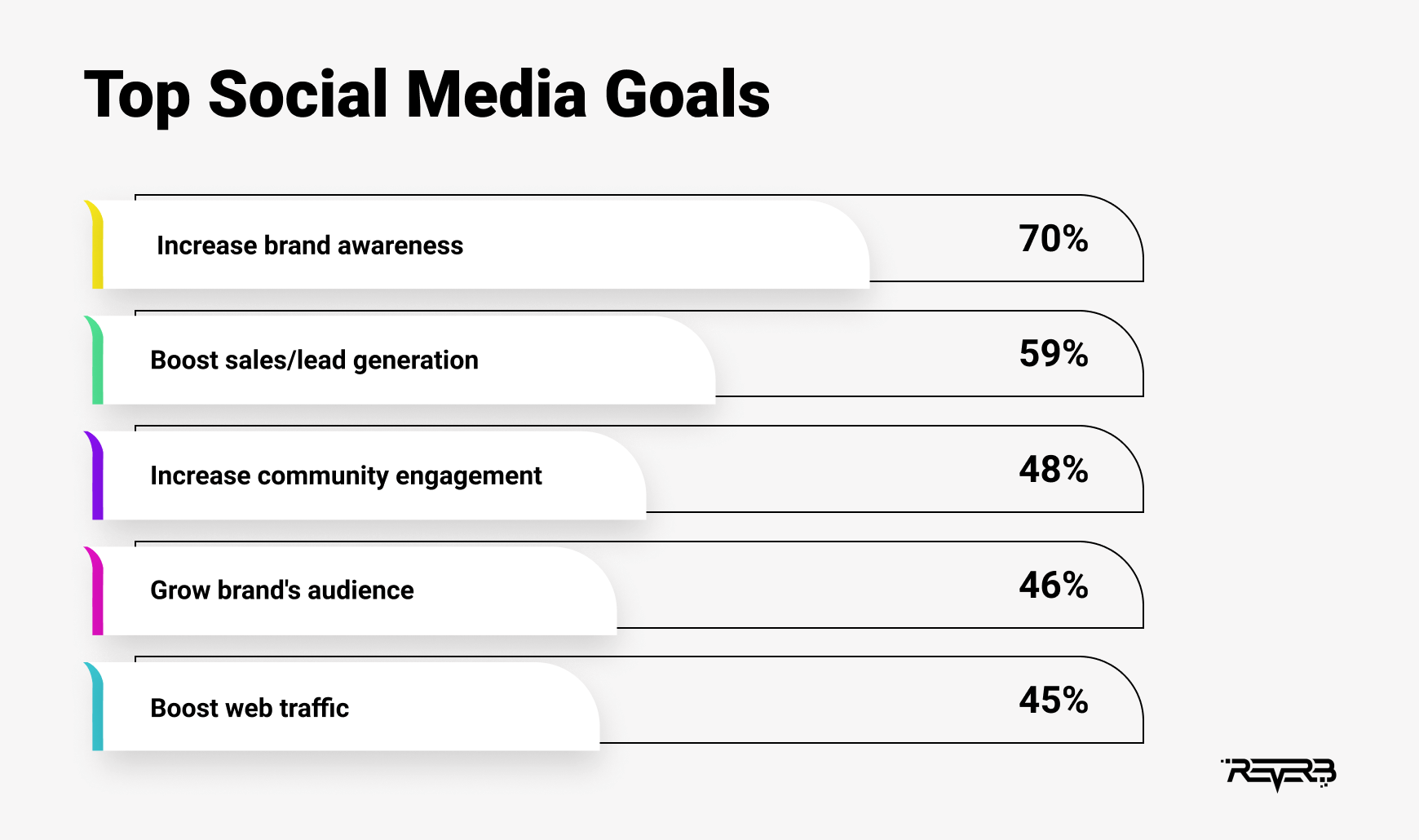
To see real results coming in, you need to prioritize these goals. Putting your task lists into a strategic order ensures you do more in less time.
The best part? Your work landscape remains clutter-free adding in the more creative room for optimizing your business growth.
2. Know your audience
Knowing your target audience and buyer personas is critical for developing a high-performance content strategy.
It not only helps you to understand your content-market fit but helps you to create a personalized content experience for your users. What follows is a superior customer experience and higher quality leads.
So the question is how to do this right?
Mapping the demographics and psychographics of your ideal customer gives you a comprehensive understanding of their lives. Get thorough information about their content consumption, the environment of consumption, how they feel about the related product, and their key challenges.
Condensing this valuable information to get rich insights that you can use to create a superior experience for your tribe.
3. Repurpose content
Creating high-quality content is one part of the game. But repurposing is the other. While you would be most likely to generate fresh content for your site, repurposing your best content is certainly critical for maximum audience reach. It only enhances the power of your content.
You can do this in many ways.
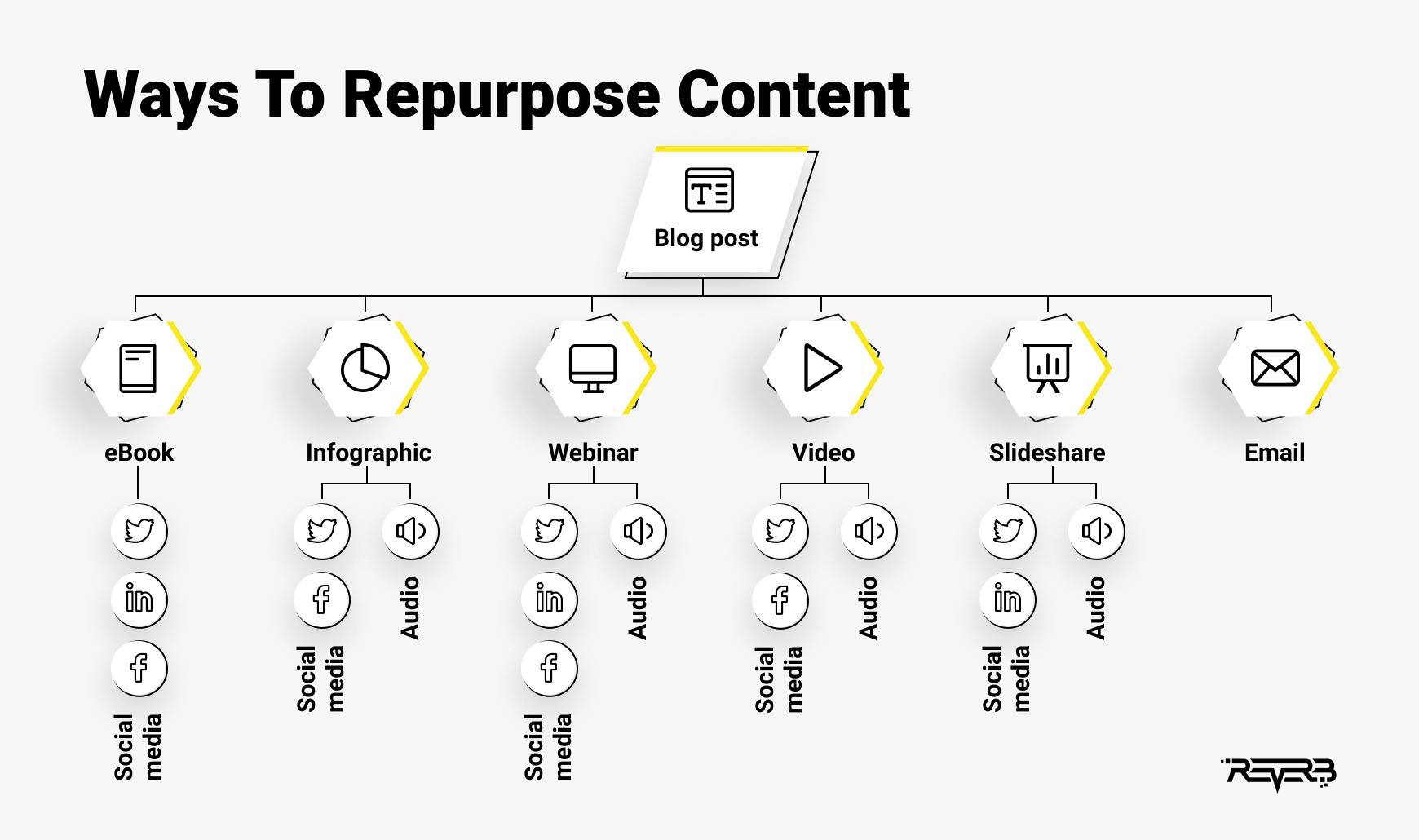
For instance, if you have created a hit podcast episode, creating a blog post out of it looks like a great idea to rank in the search engines. There are so many tools that help you to transcribe audio to text in a matter of minutes. Happyscribe is one of the best in this case.
Again, you can create an interactive infographic out of a blog post to ensure that it soothes the eyes that yearn for visuals.
A pro tip here is to ensure that you take your promotions as seriously as your creations. Also, to strengthen this repurposing strategy, you can curate other’s content. This will boost your backlink opportunities.
4. Identify your communication channels
Do not rush to use every single social media platform available out there. Be strategic about it.
There are multiple social media platforms available out there. Such as Facebook, Instagram, Linked In, Twitter, Pinterest, YouTube, Tiktok, etc. And every social media platform has its specialty and organic audience-building technique.
But to find out which ones work for you the best, you need to revisit your audience personas.
They will guide you to finalize the communication channels you want to be on. Their choices, digital behavior pattern is what drives your strategy.
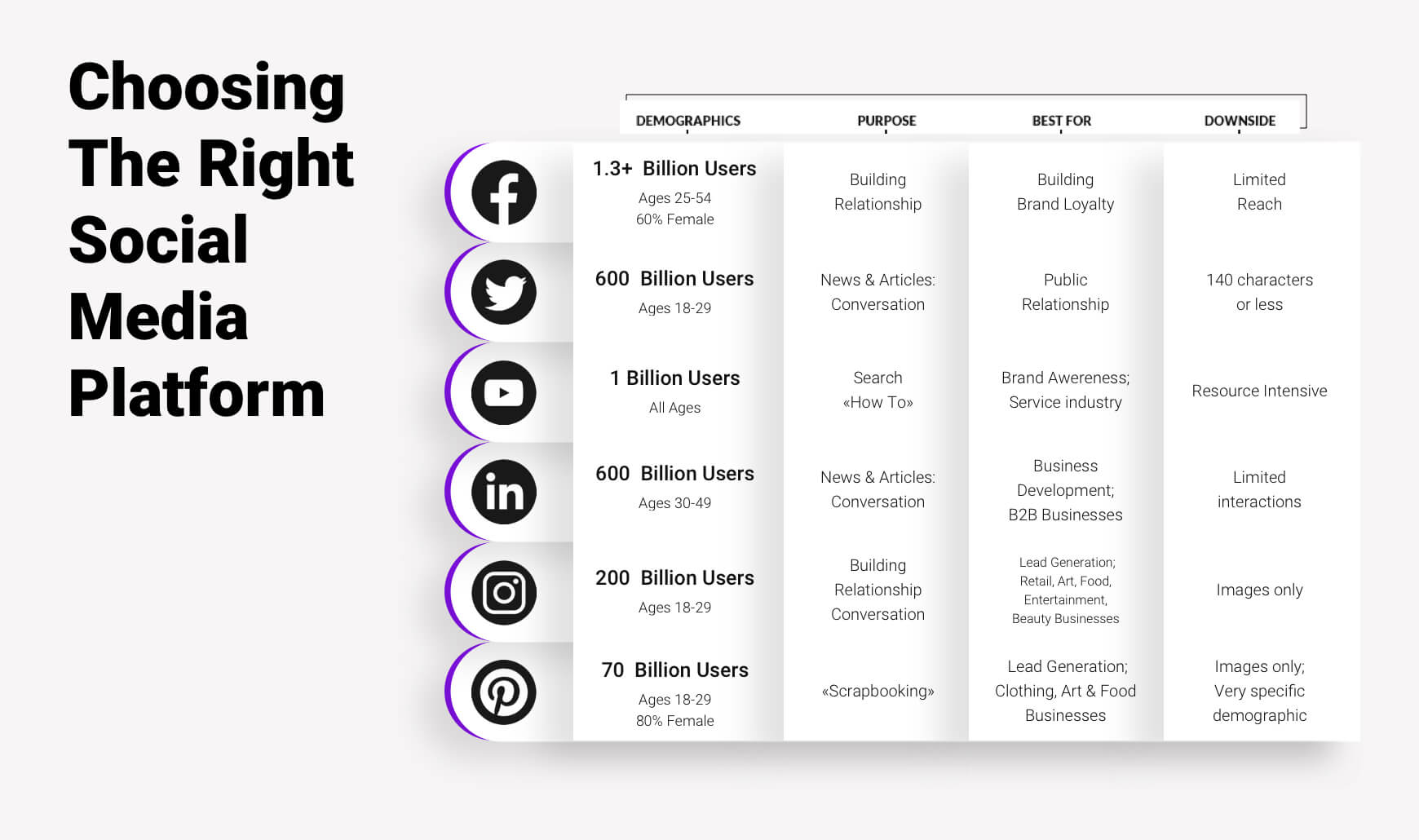 A pro tip here would be to optimize each channel for one certain core goal. For instance, if you are using emails then your goal must be only to keep warm your leads and keep them engaged. If you are using Facebook make sure your campaign has either of the ones: traffic goals, conversion goals, or engagement goals. Got the gist?
A pro tip here would be to optimize each channel for one certain core goal. For instance, if you are using emails then your goal must be only to keep warm your leads and keep them engaged. If you are using Facebook make sure your campaign has either of the ones: traffic goals, conversion goals, or engagement goals. Got the gist?
5. Plan your content
Content planning is critical to building high-performance content. Without a strategy to guide your content development, all your energy is vulnerable to get wasted.
The most common types of social media content are the following:
- Blogs, articles, and guides — These materials demonstrate your company’s expertise and knowledge and also help in building the reputation and credibility of your brand in the market.
- eBooks — These have more impact than long-form blog posts and will help you in showcasing your industry expertise to your target users.
- Images — Good images have tremendous potential to prevent your target audience from sweeping past your post and actually noticing and reading the entire message. They also serve the purpose of making your brand relatable to your customers.
- Stories — These are images and videos that last for an entire day before they disappear forever. They’re available on Snapchat, Instagram, and Facebook. There are endless possibilities with what you can do with this kind of content.
- Live videos — They’re a great way to bring live events to people who are not physically able to attend these events.
- Infographics — Infographics use visuals to support data, explanations, and other written notes. They are an impactful way to create and explain complex concepts.
- Testimonials and reviews — The fact that people trust the experiences and opinions of others more than what a business has to say makes testimonials and reviews such an important part of a social media content planning strategy.
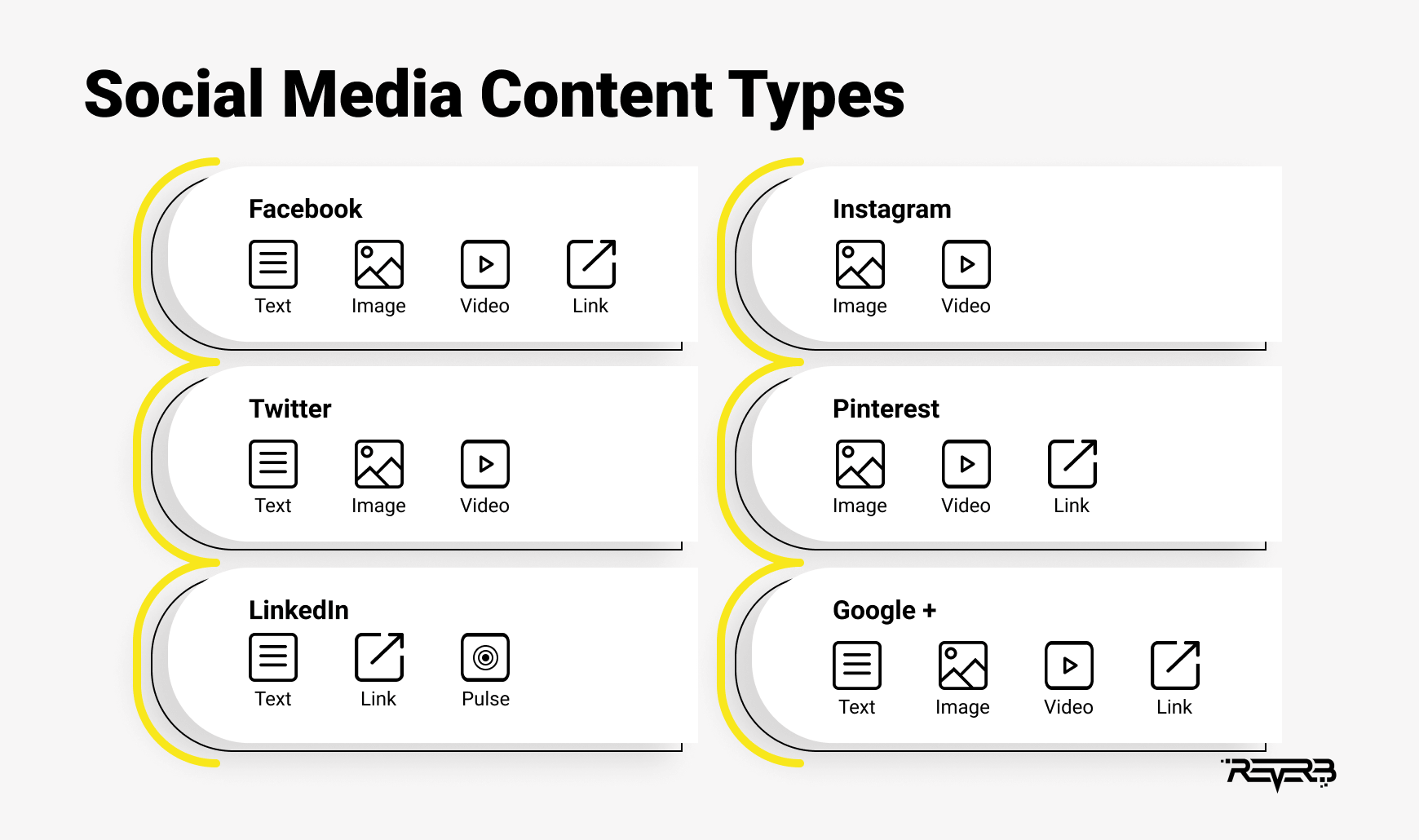 Another critical step you need to highlight here is how you would select the different types of social media content.
Another critical step you need to highlight here is how you would select the different types of social media content.
Start with revisiting your goals. This will give you direction for your content production. From the frequency of content publishing to the channels that you need to be present on, everything can be detailed by your content plan.
First, you need to do a content review on your existing content. Examine which posts were successful, which fell flat, and which was never liked by anyone. This will help you to design your content better. Fleshing out the features that impede virality now you can create a content framework that is optimized for performing better.
Many times, you can discover a discrepancy between what content you think would perform well and what does. In such a situation, analyze the phrasing and attitude you’ve used in the ineffective content.
That happens because you might have drifted away from your brand’s original tone of voice. Those types of posts may appear fake or irrelevant by your followers. That could cause a drop in engagement. Consumers also unfollow brands if they notice irrelevant posting.
Some postings will assist you in achieving larger marketing objectives. Even promotional content, though, should be consistent with your brand and voice. Keep in mind that your audience has chosen to follow you for a reason.
Maintain your voice and style distinctively, and generate authentic content to promote your business.
6. Schedule your content
After setting a schedule of publishing content and plotting it as a content calendar. This habit will make you memorize when you have to deliver your commitments.
Develop the norm to include tasks in your plan and stick to it. Most entrepreneurs use this technique to keep themselves motivated and stay on track.
Let’s not ignore that commitment to daily posting is one of the most important keys to success. It is hard to maintain, and only a few people succeed. Ones that stay on the schedule are more likely to earn a competitive advantage.
You are no longer restricted to manual content calendars only. There are multiple content scheduling tools available in the market. What’s more, we prepared a media plan template that will make your job easier.
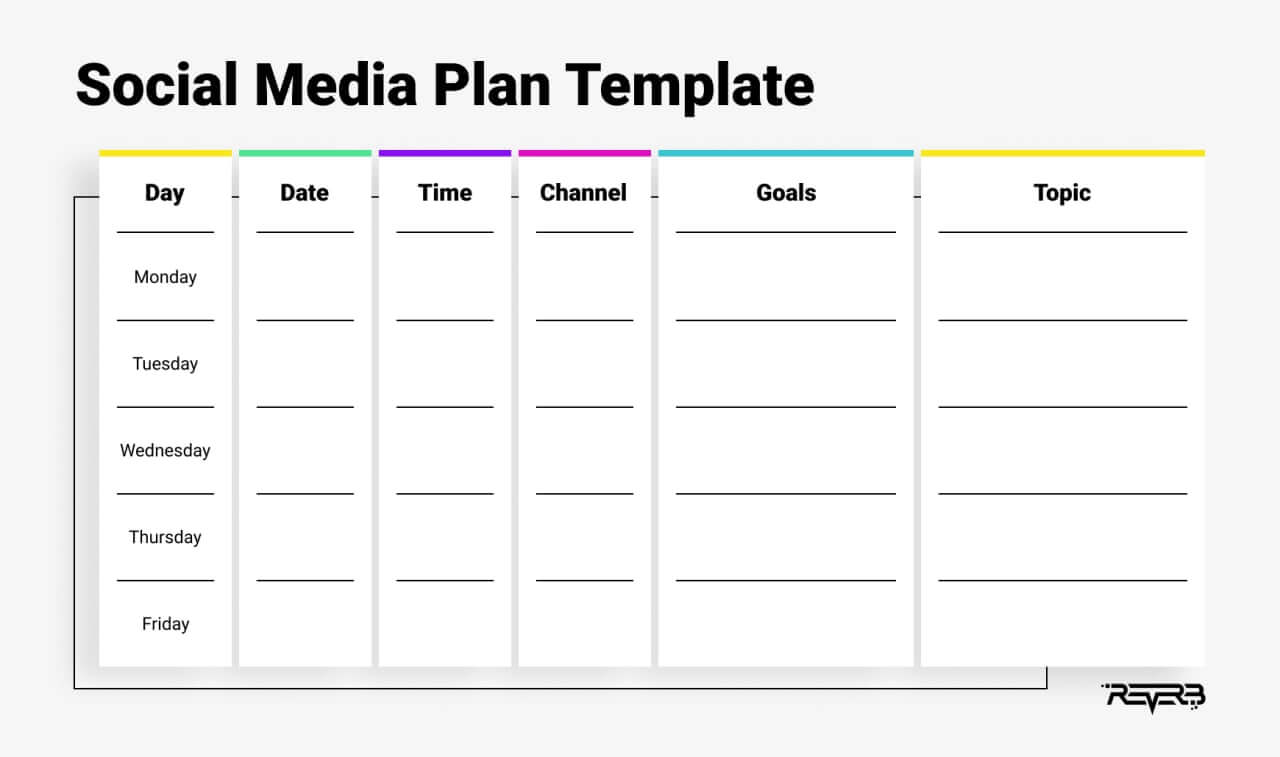
7. Track your content performance
The final step in developing a successful social media content strategy is to analyze the performance of your efforts.
Tracking your KPIs (key performance indicators) like impressions, audience reach and engagement gives you the exact health of your content marketing efforts. The best part is you can fine-tune these over time.
As a standard practice, you should audit your content every quarter. This will give you insight into the key metrics and features of a content piece that helps you to build the best-performing content. But that is not all.
While your audit will help you to find out the best, it is critical to collate the worst-performing ones. It will help you to understand what is impeding the rankings of your site on search engines.
Contrary to popular belief, taking them down from your website can actually create a rank spike for your website. What follows is an overall boost for your domain score and more opportunities for sales and traffic.
Conclusion
Developing a successful social media content strategy is not a one-day job. You need to be consistent about it.
Sure, the above tips on how to build momentum and strength of your content will create the launchpad for your content marketing efforts. But to witness maximum growth and ROI (return on investment) you would have to stay in close contact with your audience.
Keep inside the feedback loop. This will help you to understand your audience’s content preferences better. Chances are you would find topic ideas that you assumed to be completely irrelevant.
So now, when you know how to approach a successful social media content strategy, there is just one question left to answer.
When are you integrating the above steps in strategizing your social media content?




 A pro tip here would be to optimize each channel for one certain core goal. For instance, if you are using emails then your goal must be only to keep warm your leads and keep them engaged. If you are using Facebook make sure your campaign has either of the ones: traffic goals, conversion goals, or engagement goals. Got the gist?
A pro tip here would be to optimize each channel for one certain core goal. For instance, if you are using emails then your goal must be only to keep warm your leads and keep them engaged. If you are using Facebook make sure your campaign has either of the ones: traffic goals, conversion goals, or engagement goals. Got the gist?  Another critical step you need to highlight here is how you would select the different types of
Another critical step you need to highlight here is how you would select the different types of 



